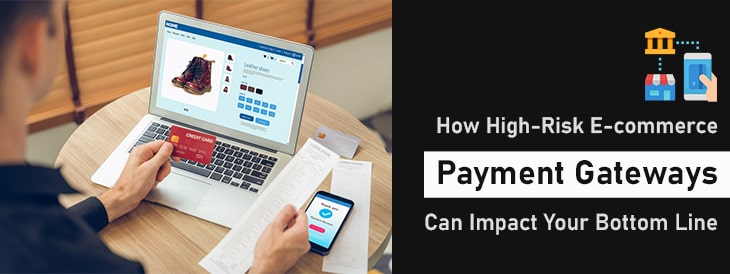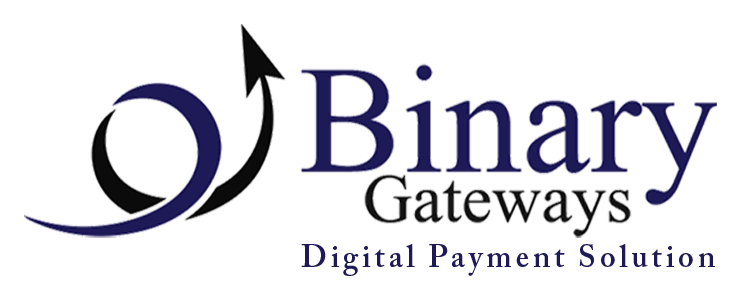How High-Risk E-commerce Payment Gateways Can Impact Your Bottom Line
How High-Risk E-commerce Payment Gateways Can Impact Your Bottom Line

An Overview of High-Risk Payment Gateways
High-risk payment gateways are designed to serve industries that face increased risk levels due to factors like chargebacks, fraud, and financial instability. These gateways differ from standard payment processors by offering customized solutions to address these elevated risks. While they provide essential services for high-risk businesses, they typically come at a higher cost. The elevated fees and more stringent requirements are part of the trade-off for gaining access to necessary payment processing services.
For businesses operating in sectors deemed high-risk, having a specialized payment gateway can be indispensable. These gateways are equipped to handle transactions that may otherwise be declined or flagged by standard processors. This is crucial for maintaining business continuity and ensuring customer transactions are processed efficiently.
In addition to handling transactions, high-risk payment gateways often come with enhanced security features designed to combat fraud. These include tools like advanced encryption, real-time monitoring, and comprehensive fraud detection systems. While these measures add to the cost, they are vital for protecting both the business and its customers.
Another aspect of high-risk payment gateways is their ability to offer flexible payment options. This is particularly beneficial for industries where customers expect multiple ways to pay, such as credit cards, e-wallets, and even cryptocurrencies. The ability to accept a wide range of payment methods can improve customer satisfaction and expand the potential customer base.
While the increased fees and stringent requirements might seem like hurdles, the benefits of using a high-risk payment gateway can outweigh these challenges. By offering specialized solutions, enhanced security, and flexible payment options, high-risk payment gateways play a crucial role in enabling businesses to operate smoothly in high-risk environments.
Some Related Blogs
- What You Need to Know About High-Risk Payment Gateway Providers
- How High-Risk Payment Processors Minimize Chargebacks
- Comparing Offshore and Domestic High-Risk Merchant Accounts
- Avoiding Common Pitfalls in High-Risk Payment Processing
Reasons for High-Risk Classification
Certain industries are typically labeled as high-risk, including adult entertainment, travel, gambling, and subscription services, among others. These classifications arise from a combination of factors, such as a high incidence of chargebacks, elevated risk of fraud, or regulatory scrutiny. Businesses with a history of financial instability or those operating in regions with high fraud rates may also find themselves categorized as high-risk. This designation can lead to increased fees and more rigorous compliance demands from payment processors.
Other factors contributing to high-risk classification include the nature of the products or services offered, the average transaction amount, and the target market. For example, sectors that involve large-ticket items or recurring billing models often face higher scrutiny because they are more susceptible to fraud and chargebacks. Companies that operate internationally or target markets known for higher fraud rates are also more likely to be classified as high-risk.
Additionally, businesses with poor credit histories or those that have previously experienced significant financial losses may be flagged as high-risk. Even new companies without a proven track record can fall into this category, as payment processors may view them as uncertain bets. The reputation of the business and the industry’s overall public perception can also influence the risk assessment. Industries with controversial or stigmatized products and services often face tougher scrutiny.
Lastly, regulatory requirements can play a significant role in this classification. Businesses that must comply with extensive legal standards, such as those in the pharmaceutical or gaming sectors, often face additional compliance checks, contributing to their high-risk status. These various factors combine to make the high-risk classification a multifaceted issue, requiring specialized solutions to manage effectively.
Financial Impact on Your Business
The financial implications of using high-risk payment gateways are substantial. Higher transaction fees are one of the most prominent factors impacting profitability. While typical payment processors might charge around 2-3% per transaction, high-risk gateways often impose fees ranging from 5-10%. These elevated fees can significantly compress profit margins, making it essential for businesses to carefully manage their finances.
Another financial burden comes in the form of reserve accounts. High-risk merchants are frequently required to maintain reserve funds, where a percentage of sales revenue is held by the payment processor as a precaution against chargebacks and potential fraud. These reserves can lock up a considerable amount of working capital, limiting the funds available for other business activities like marketing, inventory, and expansion.
Additionally, high-risk merchants often face higher scrutiny and may be subject to more frequent account reviews and audits. This can result in additional administrative costs and operational disruptions. For businesses that rely heavily on cash flow, the impact of delayed or withheld funds due to reserve requirements can be particularly challenging.
The costs associated with meeting enhanced security and compliance requirements also add to the financial strain. Investing in advanced fraud detection systems and ensuring compliance with rigorous regulatory standards necessitates additional expenditures, which can be significant.
The combination of increased transaction fees, reserve requirements, and higher operational costs creates a complex financial landscape for businesses classified as high-risk. Effective financial planning and management are crucial to navigate these challenges and maintain a sustainable business model.
Security and Fraud Mitigation
Implementing robust security protocols, such as advanced encryption and real-time fraud monitoring, not only protects against potential losses but can also enhance customer trust. Effective fraud mitigation can reduce the frequency of chargebacks and disputes, which in turn lowers processing fees and helps maintain a healthier bottom line. Investing in these security measures is an essential strategy for protecting both profits and customer relationships in a high-risk e-commerce environment.
While high-risk payment gateways come with increased fees and compliance demands, they also offer enhanced security features that are crucial for mitigating fraud. Utilizing tools like advanced encryption, real-time monitoring, and comprehensive fraud detection systems helps to safeguard transactions and sensitive customer data. These measures can deter fraudulent activities, thereby reducing the incidence of chargebacks and financial disputes.
Furthermore, investing in robust security measures can elevate customer confidence. When customers know that a business prioritizes their security, they are more likely to complete transactions and become repeat buyers. This trust can lead to increased customer loyalty and long-term profitability.
In summary, the enhanced security features offered by high-risk payment gateways , while adding to operational costs, are indispensable for fraud mitigation. By investing in advanced security tools and practices, businesses can protect their financial health and foster strong, trust-based relationships with their customers.
![]()
Email us anytime!
Email customer service 24/7 at info@binarygateways.com
![]()
Call us anytime!
Reach customer care 24/7 at (801) 761-5001
